From 1969 to 1977, as many as 120 men, women, and children lived in treehouses on the North Shore of Kauai in a free love community known as Taylor Camp — but locals complained of the wild parties, drug use, and clothing-optional lifestyle that flourished at the commune.
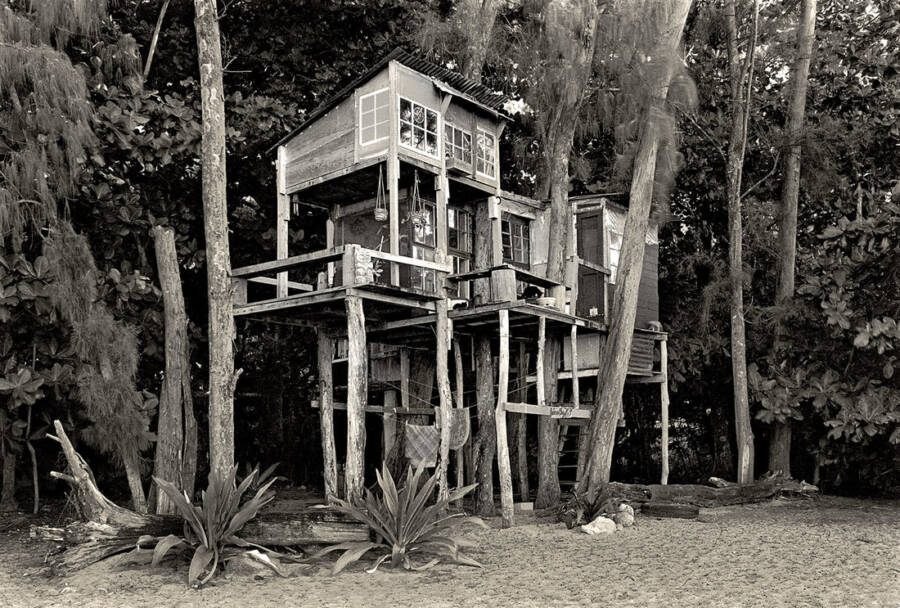
John Wehrheim/FacebookOne of the makeshift structures at Taylor Camp, which residents built with scavenged wood.
As the dreams of the 1960s waned, a group of idealistic people made their way to Hawaii. There, thanks to a surprising sequence of events involving arrest, revenge, and Elizabeth Taylor’s brother, they were able to establish a community on Kauai’s North Shore called Taylor Camp. For a few short years, the 1960s lived on beneath the Hawaiian sun.
The people of Taylor Camp — who never numbered many more than 100 — embraced communal living. They spent their days making love, playing volleyball, and dancing in the sunset. They had babies, gardened without wearing clothing, and built temporary structures out of scavenged wood.
But Taylor Camp, established on condemned land, was doomed from the start. The state closed down Taylor Camp in 1977 in order to expand a public park, and its remaining inhabitants scattered on the wind.
How A Condemned Property Led To Taylor Camp
Strangely, the story of Taylor Camp begins with Howard Taylor, the brother of iconic actress Elizabeth Taylor. In 1969, Howard Taylor’s beachfront property on Kauai’s North Shore was condemned by the state. Taylor was enraged. Then, he heard about a group of 13 hippies who had arrived from the mainland.
At the time, Hawaii was largely cut off from the politics of the continental U.S., and the hippie movement of the 1960s had never reached the shores of Kauai in any significant way. The 13 hippies that Taylor learned about had recently been arrested for vagrancy, a charge which stemmed from their naked beach volleyball games, tent living, and marijuana smoking. Taylor decided not only to bail them out of jail but, to exact his revenge on the state, to also offer them the use of his seven acres of beachfront property.
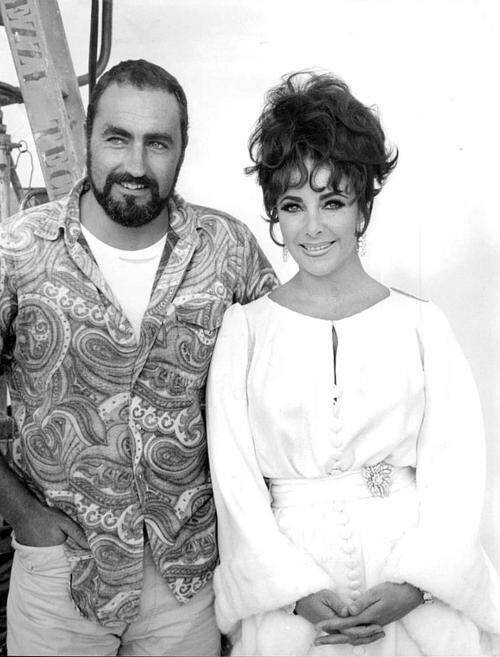
elizabethtaylor.comHoward Taylor and Elizabeth Taylor.
“It’s your land and they’re now your hippies,” he reportedly told officials, according to reporting from Smithsonian Magazine in 2012.
Though the 13 original members of this new community, dubbed Taylor Camp, did not stick around for much longer, others soon arrived to take their place. As the peace-and-love feelings of the 1960s dimmed in face of war, assassinations, and civil unrest, they set up camp along Kauai’s North Shore.
Inside The Hippie Utopia Of Taylor Camp
To the chagrin of locals living nearby, Taylor Camp quickly began to grow. According to an article from the Honolulu Star-Advertiser in 2010, it drew surfers, hippies, and war veterans looking for a little peace. Before long, the population of Taylor Camp swelled to a peak of 120 people.
They replaced makeshift tents with more permanent structures constructed from scavenged wood. They built communal toilets and showers, elected a “mayor” and “sheriff,” established a food co-op, and worshipped at various churches, including the Church of the Brotherhood of the Paradise Children.
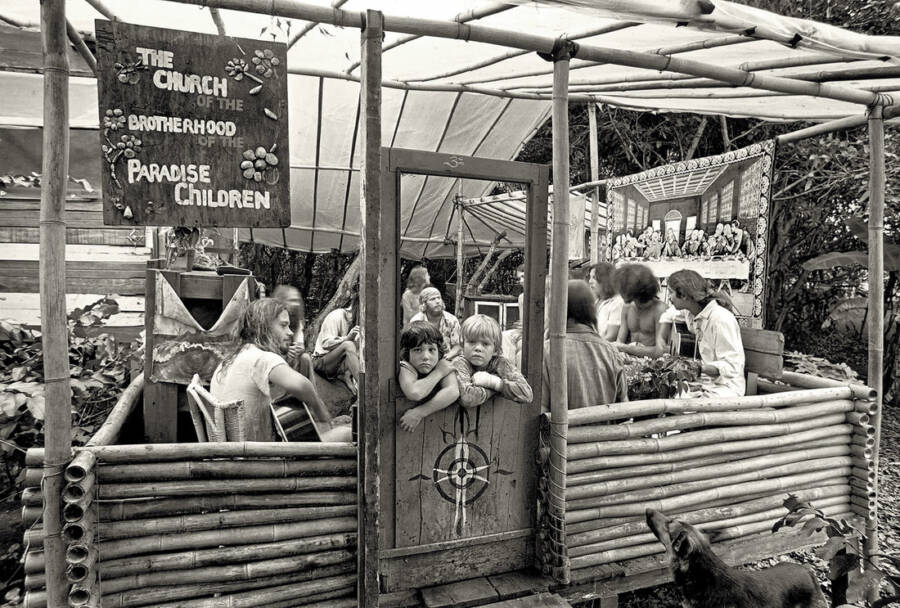
John Wehrheim/FacebookTaylor Camp families at the Church of the Brotherhood of the Paradise Children, one of the churches they established in the community.
The people of Taylor Camp also embraced the free love ethos of the 1960s. They shared romantic partners, did drugs, threw raucous parties, spent more time without clothing than not, and had babies. They spent their days gardening, playing volleyball, and enjoying nature. The structure of the camp was loosely organized, and people were largely free to do whatever they wanted to do.
“Taylor Camp wasn’t a commune,” John Wehrheim, who photographed the camp in the 1970s and produced a documentary about it called Taylor Camp: Living the ’60s Dream, noted in an accompanying book of his photos. “It had no guru, no clearly defined leadership, and never had a single voice. It had no written ordinances. It wasn’t a democracy. It was much more than that: a community guided by a spirit that created order without rules.”
The camp wasn’t totally idyllic, however. According to the Honolulu Star-Advertiser, people living nearby saw the camp as an “eyesore” and disliked its open drug use. There were “violent conflicts” between locals and Taylor Camp residents, and local politicians campaigned to shut it down.
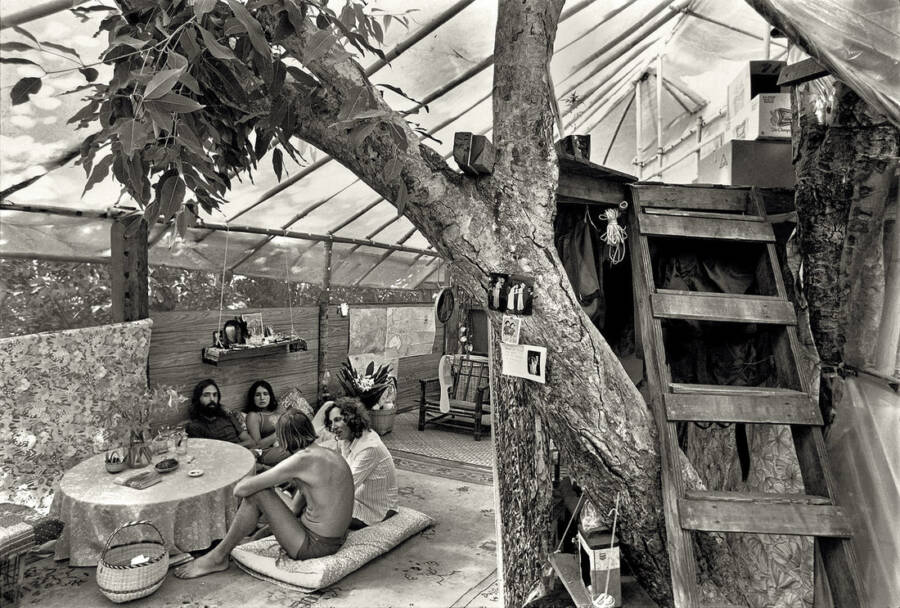
John Wehrheim/FacebookPeople inside a house built into a tree at Taylor Camp.
Wehrheim also acknowledged that Taylor Camp had its dark side. Speaking about the community to Slate in 2015, he remarked: “I tried not to romanticize Taylor Camp. Anyone who reads the book or looks at the film will find a story that includes addiction, disease, alcoholism, violence, and sexual abuse: the same things that one finds in any community.”
As if it were a reflection of the larger hippie movement in the United States, Taylor Camp’s early days of peace and love eventually evolved into something different as transients and harder drugs appeared. It was officially shut down in 1977, and its residents were evicted. To ensure that they wouldn’t return, the authorities also burned Taylor Camp to the ground.
But those who lived there never forgot the experience.
The Lost Hippie Haven Of Hawaii
Today, Taylor Camp is part of Hawaii’s Ha’ena State Park. Half a century has passed since it was demolished, and little evidence remains of the former hippie haven. Taylor Camp lives on, however, for people who lived there.
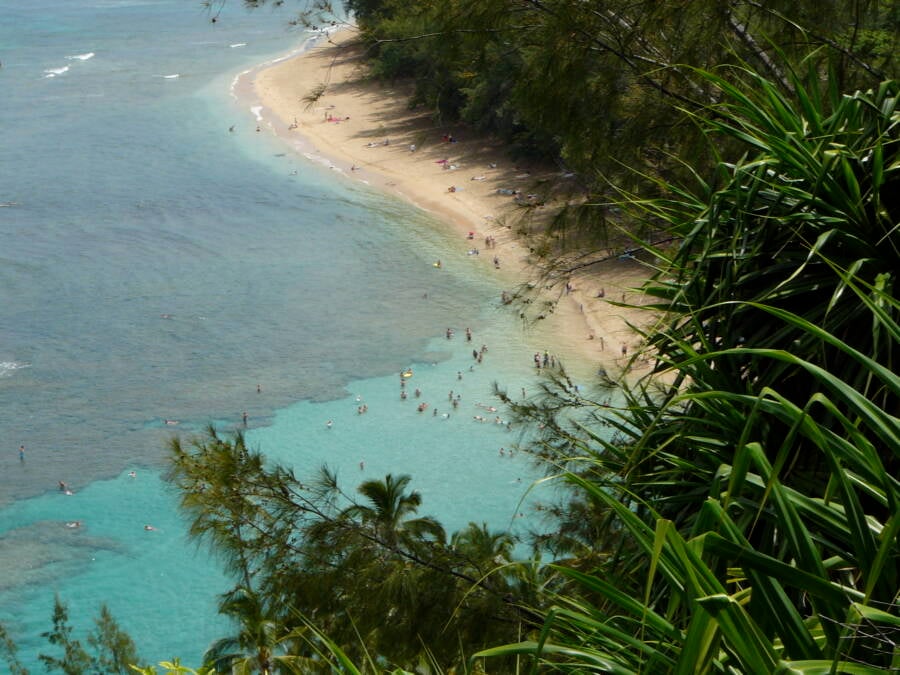
MattWright/Wikimedia CommonsTaylor Camp was located on the edge of Ha’ena State Park in Hawaii.
“If I could go back, I would go back this second,” David Pearson, a surfer and Taylor Camp resident who became a public school teacher after his time in the colony, recalled to the Honolulu Star-Advertiser. “I can’t imagine anything more pristine and beautiful than the life I had there.”
David met his wife, Francine, at Taylor Camp. She moved into the community while on a trip to Hawaii in 1976, leaving her East Coast lobbying job behind. Though her friends thought she had joined a “cult,” Francine described her time at Taylor Camp as the “single most defining experience” of her life.
“It changed me in ways that are evolutionary,” she told the Honolulu Star-Advertiser. “The whole idea of being a part of nature rather than outside of it, and having to tame it, is enormous. I became a spiritual person.”
Indeed, most people who lived at Taylor Camp have fond memories of their lives there. Though the community lasted just a few years — and though no trace of it exists today — they seem to describe it as a positive, beautiful, and nurturing experience. For a brief and fleeting time, Taylor Camp embodied the highest hopes of the 1960s. Then, like the 1960s, it vanished into history.
After reading about the fascinating hippie history of Taylor Camp, look through these photos of the Summer of Love. Or, enjoy these stunning photos of Paris in the 1960s.





